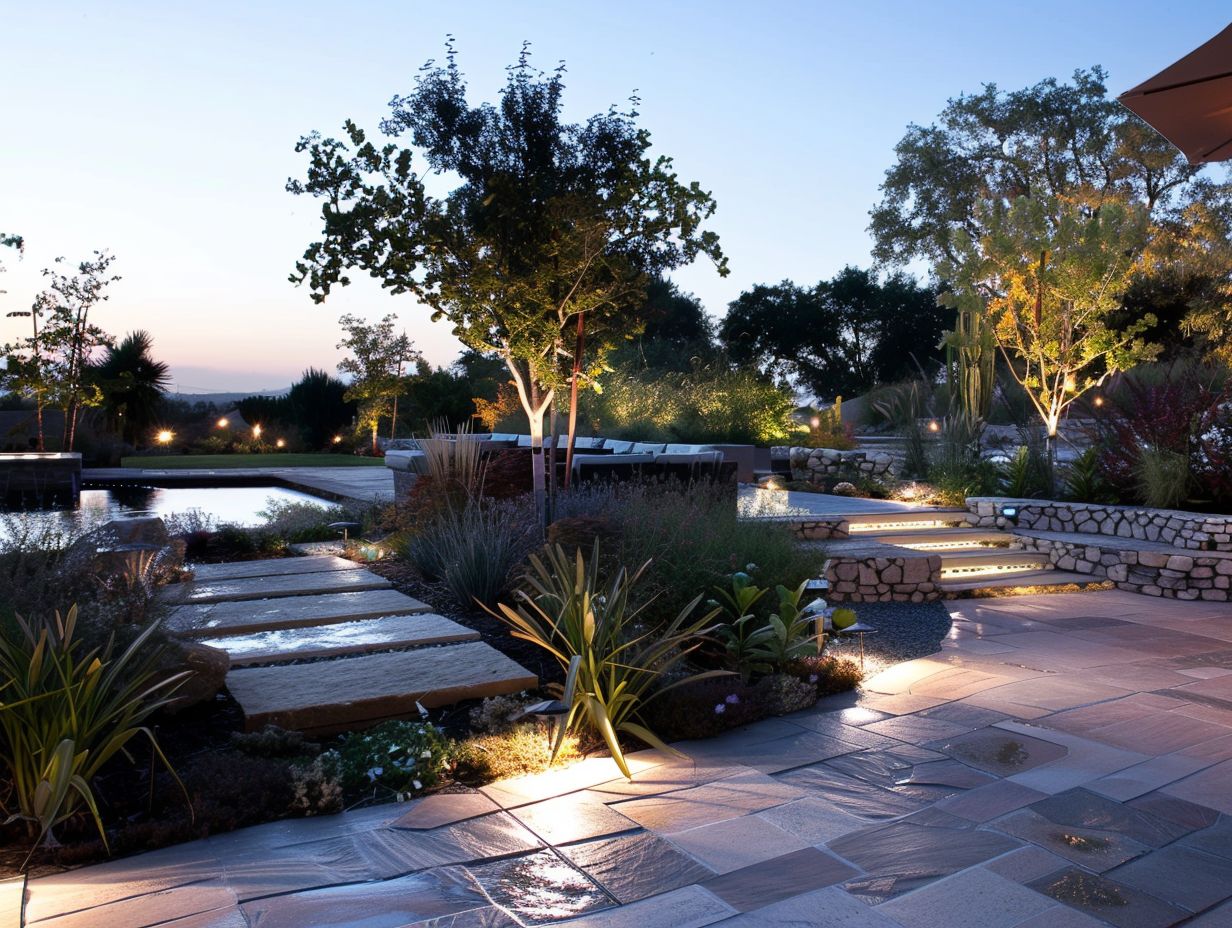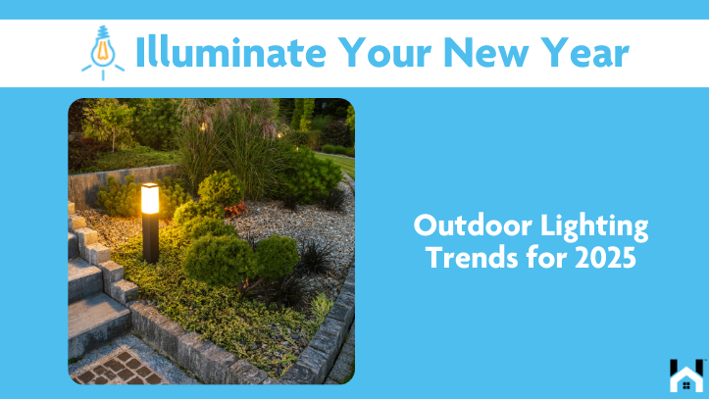Outdoor lighting serves as a dual-purpose feature, enhancing the aesthetic appeal of your outdoor area while also increasing the safety and security of your property.
In the following discussion, we will delve into the advantages and significance of regular maintenance for your outdoor lighting setup. Our exploration will cover various outdoor lighting options commonly used, methods for recognizing indicators of a malfunctioning system, do-it-yourself maintenance recommendations, optimal occasions for engaging professional services, seasonal maintenance duties, and supplementary advice for optimizing energy efficiency and ensuring long-lasting performance.
Remain engaged to discover the strategies for maintaining the brilliance of your outdoor lighting throughout the year.
Benefits and Importance of Proper Maintenance

Maintaining outdoor lighting systems properly offers various advantages, such as ensuring the system functions efficiently and effectively, enhancing energy efficiency, prolonging the system's lifespan, and guaranteeing the safety of the outdoor area.
Routine maintenance not only ensures the lights remain bright but also aids in identifying and resolving any potential issues early on before they worsen. By regularly inspecting the wiring, bulbs, connections, and fixtures, individuals can prevent malfunctions and breakdowns, ultimately extending the system's overall lifespan. Furthermore, well-maintained outdoor lighting systems not only optimize energy efficiency but also promote a safer environment by reducing the risk of accidents or malfunctions that could lead to harm or hazardous conditions.
Common Types of Outdoor Lighting
When considering outdoor lighting options, there is a range of types to choose from that cater to various requirements. These include decorative pathway lights and security lights, which are specifically designed to improve safety and provide lighting in targeted areas.
In landscape design, lighting holds significant importance in highlighting the beauty of a garden or yard, ultimately creating an aesthetically pleasing environment. Energy-efficient LED fixtures are a popular option for outdoor lighting due to their long lifespan and lower energy consumption. Pathway lights not only serve a practical function by illuminating paths but also contribute to the overall elegance of outdoor spaces. Security lights, strategically positioned around a property's exterior, enhance both safety measures and the overall design aesthetic.
Selecting the appropriate type of outdoor lighting is crucial in achieving the desired ambiance while ensuring both functionality and efficiency.
Overview of Different Options
- Various outdoor lighting options differ in bulb types, energy efficiency, brightness levels, and additional features such as solar panels for eco-friendly operation and motion sensors for improved security.
LED bulbs, for example, are recognized for their energy efficiency and long lifespan, making them a popular selection for outdoor lighting. They consume less power while offering bright illumination.
In contrast, halogen bulbs provide a warmer light that is frequently favored for accent lighting.
Solar-powered lights utilize solar energy during the day, allowing them to automatically illuminate at night without incurring electricity costs.
Motion sensor lights, which can detect movement and activate illumination, are ideal for enhancing safety and discouraging potential intruders.
Signs of a Malfunctioning Outdoor Lighting System
It is important to be able to identify the signs of a malfunctioning outdoor lighting system to address any issues promptly and restore the system's functionality. Some common signs that may indicate problems with the outdoor lighting system include lights flickering, inconsistent brightness levels, and fixtures that do not respond.
Issues with the power sources, such as frequent power outages or surges, can also be indicators of a problem within the outdoor lighting system. Problems with the wiring, which may be evident through exposed wires or visible damage, can result in the lights functioning irregularly. Sensitivity issues, where lights turn on and off unexpectedly or at unusual times, are signs of underlying problems that should be addressed. It is crucial to troubleshoot these problems promptly to ensure that the system operates optimally and to prevent any potential safety hazards.
Identifying and Troubleshooting Issues
Identifying and resolving problems in an outdoor lighting system requires a comprehensive approach, which includes conducting thorough inspections, examining wiring connections, cleaning fixtures, and troubleshooting components to identify and address any underlying issues.
Regular maintenance of your outdoor lighting system is essential for preventing potential problems. To begin, inspect all light fixtures for any signs of damage or wear. Check the wiring connections for loose wires or corrosion. Thoroughly clean the fixtures to eliminate any dirt or debris that may be obstructing the light output. In cases of dim or flickering lights, systematically test each component, such as bulbs and transformers, to pinpoint the malfunctioning part.
DIY Maintenance Tips for Outdoor Lighting

Utilizing do-it-yourself maintenance suggestions for outdoor lighting, such as cleaning fixtures, changing bulbs, performing regular inspections, and optimizing energy-efficient features like sensor range settings, can significantly enhance the system's performance and lifespan.
Regularly cleaning the light fixtures with mild soapy water and a soft cloth aids in eliminating accumulated dirt and grime, ensuring optimal light output. When replacing bulbs, it is important to deactivate the power source, let the bulb cool down, and handle it with care to prevent breakage. Performing routine inspections to identify loose connections, damaged wires, or any indications of wear and tear is crucial for averting potential hazards. Adjusting sensor range settings to an appropriate level can improve energy efficiency by reducing unnecessary light activation.
Cleaning and Replacing Bulbs
Regular maintenance of outdoor lighting is crucial to keep the system working well and prevent problems like water damage and corrosion. It's important to clean the fixtures and replace bulbs as needed to maintain optimal light intensity.
When fixtures get dirty or bulbs aren't replaced on time, the lighting system's performance can suffer. Cleaning fixtures with a mild soap and water solution helps to remove dirt that may be blocking the light output. Using replacement parts made for the system can improve efficiency and longevity. Consistent light intensity not only enhances the outdoor space's look but also adds to safety and security.
Waterproofing the components is essential to protect them from tough weather conditions and extend the system's lifespan.
Hiring a Professional for Maintenance
Choosing to enlist the services of a professional for the maintenance of outdoor lighting guarantees adherence to safety protocols, effective resolution of complex issues, and the provision of expert care and troubleshooting advice to optimize system performance.
These professionals not only possess the requisite skills and knowledge to address any electrical concerns that may arise but also ensure that all work is in compliance with safety standards. By enlisting the services of a qualified electrician for outdoor lighting maintenance, individuals can have peace of mind knowing that their systems will receive meticulous care using industry-grade practices.
Professional maintenance services provide the benefit of routine inspections and prompt repairs, extending the lifespan of the outdoor lighting system while ensuring it operates at its peak performance level.
When to Seek Professional Help
Recognizing the appropriate time to enlist professional aid for outdoor lighting concerns is crucial when addressing intricate troubleshooting scenarios, repairs demanding technical proficiency, prioritizing safety protocols, or the necessity of specialized repair methods and replacement components for system restoration.
Professional intervention becomes imperative in scenarios where outdoor lighting issues persist despite repeated attempts at DIY troubleshooting. These circumstances might encompass intricate wiring layouts, fixtures necessitating specialized repairs, or the presence of complex control systems. Confronting these obstacles typically demands a profound understanding and practical experience in managing outdoor lighting setups.
Safety considerations, like exposed wires or faulty connections, also justify the involvement of professionals to avert potential accidents. Seasoned technicians possess the expertise to accurately diagnose root causes, employ specialized tools for repairs, and recommend appropriate replacement components that align with the system's specifications.
Seasonal Maintenance for Outdoor Lighting
Implementing seasonal maintenance practices for outdoor lighting involves making necessary adjustments based on weather conditions, conducting preventive care measures to safeguard the system, and using weather-resistant materials to ensure durability and longevity.
When adjusting the settings of your outdoor lighting system in line with seasonal changes, you can optimize performance and improve visibility. For example, during the summer months with longer daylight hours, reducing the brightness of your lights may be necessary. Conversely, in winter when nights are longer, increasing the illumination can enhance visibility.
To prevent potential issues from escalating, it's important to employ preventive care strategies such as regular fixture cleaning and checking for loose connections. Investing in weather-resistant materials, such as corrosion-resistant metals and UV-resistant coatings, can provide protection against harsh elements like rain, snow, and UV rays, ensuring the longevity of your lighting system.
Preparing for Different Seasons

Getting your outdoor lighting systems ready for different seasons involves a few key steps, such as adjusting timer settings, inspecting wiring circuitry for any weather-related damage, calibrating light sensors to ensure accuracy, and evaluating energy efficiency ratings for optimal performance in various weather conditions.
By diligently following these steps, you can make sure that your outdoor lighting system is well-prepared to tackle the challenges that come with changing seasons.
Here are some specific actions you can take:
- Adjusting the timers guarantees that the lights turn on at the appropriate times, improving both safety and aesthetics.
- Inspecting the circuitry for any wear or damage helps prevent malfunctions and potential safety risks.
- Calibrating light sensors precisely enables them to effectively respond to changing light conditions, maximizing their efficiency and functionality.
- Evaluating energy efficiency ratings give the power tos you to make informed choices that can result in cost savings and a reduced environmental impact.
Additional Tips for Maintaining Outdoor Lighting
For the optimal performance and durability of outdoor lighting systems, it is advisable to consider additional maintenance tips. These include optimizing energy savings, effectively utilizing timer functions, mitigating light pollution impacts, and implementing emergency backup solutions to ensure uninterrupted illumination.
One way to enhance energy efficiency in outdoor lighting is to switch to LED bulbs. LED bulbs consume less power and have a longer lifespan compared to traditional incandescent lighting. By adjusting the timer functions to align with sunset and sunrise times, unnecessary energy usage can be minimized. To combat light pollution, using shielded fixtures that direct light downwards instead of dispersing it in all directions is recommended. Additionally, incorporating a backup power source, such as solar panels or battery backups, can guarantee continuous operation during power outages, enhancing safety and security measures.
Maximizing Energy Efficiency and Longevity
To achieve maximum energy efficiency and longevity in outdoor lighting systems, it is essential to integrate LED fixtures, establish appropriate timer schedules, utilize solar panels for renewable energy sources, and ensure weather sealing to protect components from environmental elements.
The use of LED technology is crucial in reducing energy consumption and maintenance costs, while also providing superior illumination quality. By optimizing timer settings, the lighting system can be programmed to operate only when necessary, further conserving energy. Solar panels offer a sustainable power solution, reducing reliance on traditional electricity sources and decreasing operating expenses in the long term. Additionally, implementing weather sealing measures enhances the system's resilience against harsh weather conditions, extending its lifespan and reducing the frequency of repairs required.




